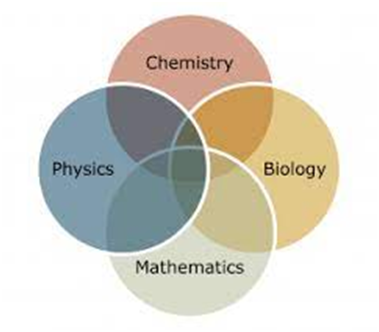How do Enzymes Catalyze Reaction
Each enzyme has an active site to which substrate binds
and forms a short-lived highly reaction enzyme substrate complex. This is
followed by enzyme product complex (EP). Finally the enzyme product
complex dissociates in to product (P) and the enzyme freed, remains unchanged
and able to bind more substrate molecules
Substrate and
active site binding mechanism The
formation of the ES complex is essential for catalysis
E + S = ES ---- EP --- E + P
The
catalytic cycle of an enzyme can be described as:
01.The substrate binds to the active
site of enzyme.
02.The
binding of the substrate induces the enzyme to alter its shape and fit tightly
around the substrate.
03.The
active site of the enzyme which is in close proximity of the substrate break
the chemical bond of the substrate and an enzyme product complex is formed.
04.The
enzyme releases the product of the reaction and the free enzyme is ready to take
up another molecule of substrate
FACTORS AFFECTING
ENZYME ACTIVITY
Enzymes are proteins with tertiary structure. Any change in
tertiary structure would
affect the action of enzymes. Factor which affect enzyme action are as
follows:
01.Temperature: Enzyme action is greatly affected by
temperature. The temperature. The temperature at which enzyme show their
highest activity is called optimum temperature. Enzyme activity declines both
above and below the optimum temperature. At low temperature, enzyme becomes
temporarily inactive and increasing the temperature to normal, they regain
their lost activity. At high temperature there is a loss of enzyme activity due
to protein denaturation. At high temperature kinetic energy of molecules in an
enzyme becomes strong to break the weak hydrogen bond present in tertiary
structure of enzyme resulting in loss of catalytic activity. This change in
structure is called denaturation of enzyme. One an enzyme denatures, it remains
inactive as temperature is lowered down.
The optimum
temperature for human enzymes 35 – 40o C. The enzyme activity
decreases with decrease as well as increase in temperature and stops at 0oC
and 80oC.
02.pH: At optimum pH the activity of enzymes
is maximum for most enzymes, the effective pH range is 4-9. Beyond these limit denaturation
of enzymes takes places. For example the optimum pH for pepsin is 2 and for
trypsin is 8.
03.Concentration of substrate: Increase in substrate concentration,
increases the velocity of enzymatic reaction. The reaction soon reaches a
maximum velocity (Vmax) which is not exceed by further rise in
concentration of substrate. This is because, at this stage the enzyme molecules
become fully saturated and no active site is left free to bind to additional
substrate molecules.
04.Product concentration: Accumulation of the product of enzyme
reaction lowers the enzyme activity. Enzyme molecules must be freed to combine
with more substrate molecules. Normally the products are quickly removed from
the site of formation and reaction does not suffer.





0 Comments